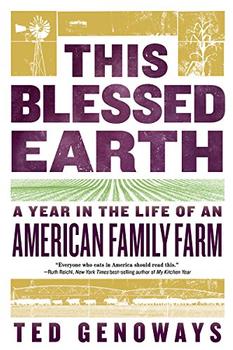Summary | Excerpt | Reading Guide | Discuss | Reviews | Beyond the book | Read-Alikes | Genres & Themes | Author Bio

The 395-page Some Luck, which is part of an intended trilogy, focuses on a farming family in a small town in Iowa, from 1920 to 1953.
The novel starts with the birth of the first son, Frank, to parents Rosanna and Walter Langdon. Jane Smiley uses an unusual technique to bring their world close to the reader by depicting it through the eyes of baby Frank. The effect is one of immediacy, as his world is made mostly of sensations and wonder. The feelings around his Mama are soft and pleasant, while those around his Papa are more likely to be rough and noisy. Thus, the reader discovers the world along with the baby, and this gradual discovery that expands from the mother's lap to what happens out of the window, leads to a very sensory reading experience. The other side-effect of this technique is that we know Frank intimately from the time he is a baby, and see his personality develop into the adult he will later become.
Indeed, one of the greatest pleasures of this novel is that Smiley endows with personalities all the Langdon babies, allowing us to grow up together with them. Frank's self-confidence, independence and remarkable intelligence as a young man are already present in his stubbornness and lack of fear to take risks, even when he knows that he will be punished, as a young child. Joe, the second-born child, whose sweetness and good nature make him unobtrusive and obedient, will suffer as an adult because he won't have the courage to demand the hand of the woman he loves; at the same time, those qualities will make him the best candidate to continue the family tradition and become a successful farmer.
Mary Elizabeth, the third-born child, dies as a toddler in an unfortunate accident – an event that leads Rosanna to grow more religious and to completely forego any other interest besides her family. Another girl follows, Lillian Elizabeth, whose unusual beauty and good behavior make her beloved by everyone. We are surprised when, at twenty-years old, she elopes to Maryland with the mysterious Arthur she barely knows, but, luckily, he proves to be a solid man. He even gets along with Frank who, by that time, has returned from the war and is ready to settle down with a former girlfriend.
The fifth-born child, Henry, is Lillian's male equivalent: a beautiful boy who doesn't quite fit into a farming environment, a passionate reader of novels and, later, a studious young man. Finally, the last Langdon child, Claire, born when her parents are past their prime, is her father's favorite, but doesn't get much attention from her mother.
Other characters – neighbors, relatives and friends – are introduced throughout the novel, enhancing the real-life effect and contributing to the background that situates the novel in time and space. Rosanna's sister, Eloise, leaves for Chicago and marries a Jewish-British man with whom she works for various Communist organizations. While in high school, Frank lives with the couple for a while, and thus, his universe expands in an unexpected way. The couples Eloise-Julius, Frank-Andrea and Lillian-Arthur, all living in metropolitan areas or on the East coast, open up the story geographically, politically and culturally. The Cold War intrigues involving Frank and Arthur at the end of Some Luck are somewhat surprising: on the one hand, they are captivating, but on the other, they seem to belong in a different novel.
In a memorable and cinematic scene, the entire family – Granny Elizabeth, Walter, Rosanna, all their five children and, in the case of the married ones, their spouses too, plus Lillian's children – are seated together for Thanksgiving dinner, and Rosanna and Walter look at each other and tacitly agree that "something had created itself from nothing." Like the Langdons, Some Luck succeeds in creating a multitude of worlds, each of them as rich as the characters inhabiting it.
![]() This review was originally published in The BookBrowse Review in October 2014, and has been updated for the
August 2015 edition.
Click here to go to this issue.
This review was originally published in The BookBrowse Review in October 2014, and has been updated for the
August 2015 edition.
Click here to go to this issue.

If you liked Some Luck, try these:

by Ted Genoways
Published 2018
Is there still a place for the farm in today's America?

by Min Jin Lee
Published 2017
A new tour de force from the bestselling author of Free Food for Millionaires, for readers of The Kite Runner and Cutting for Stone.
Courage - a perfect sensibility of the measure of danger, and a mental willingness to endure it.
Click Here to find out who said this, as well as discovering other famous literary quotes!
Your guide toexceptional books
BookBrowse seeks out and recommends the best in contemporary fiction and nonfiction—books that not only engage and entertain but also deepen our understanding of ourselves and the world around us.